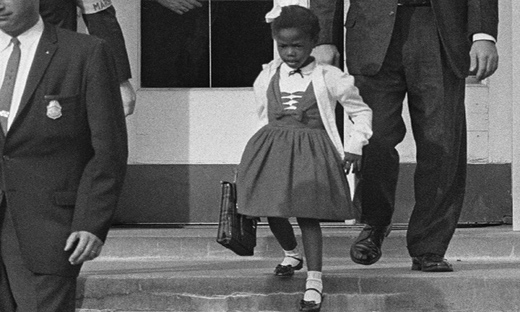
LOS ANGELES – Sixty years after the U.S. Supreme Court’s famous Brown vs. Board of Education ruling ordering desegregation of the nation’s schools, U.S. schools are more segregated than when the court ruled in 1954, a new study shows.
And that condition greatly concerns Randi Weingarten, the American Federation of Teachers president, whose union represents most big-city school teachers – the areas that are now the most-segregated.
Weingarten, a New York City teacher, says the new segregation, by class and income, harms students just as the old state-legalized segregation in the Solid South did.
“The decision 60 years ago was a moral and legal imperative, but today we have segregated schools based on poverty,” Weingarten told a crowd in Topeka, Kansas, where the case began. “The legacy of Brown vs. Board of Education is to create the opportunities in our public schools so that all kids, of all races and income levels, can succeed.
“Today’s moral imperative is to give our kids a great public education system by fixing-not closing – neighborhood public schools. All kids need safe, welcoming neighborhood schools that offer an engaging, well-rounded curriculum that includes art and music, expanded early childhood education programs, resources and support for teachers, and wraparound services in schools to help disadvantaged kids and families overcome the effects of poverty.”
The new study, from the University of California at Los Angeles (UCLA), shows, ironically, that the least-segregated schools in the country are in the once-segregated South, thanks to lower federal court decisions that implemented the High Court’s Brown ruling. But even in the South, there’s been backsliding.
The UCLA study, “Brown at 60: Great Progress, a Long Retreat and an Uncertain Future,” found that since the civil rights era of the 1960s-1980s, the number of white students in U.S. schools has dropped by 30 percent, and the number of Latinos has quintupled.
The South now has more Latino than black students in public schools, and both the South and the West are majority-minority in their public school student populations. The South hasn’t returned to state-ordered segregation, but it is still least integrated for blacks. And when court-ordered desegregation ended in large school districts – such as Charlotte, N.C., Richmond, Va., and St. Petersburg, Fla. – segregation returned.
But it’s now a segregation by class, the UCLA report says.
“Brown was a major accomplishment and we should rightfully be proud. But a real celebration should also involve thinking seriously about why the country has turned away from the goal of Brown and accepted deepening polarization and inequality in our schools,” said Gary Orfield, the study’s co-author and director of UCLA’s Civil Rights Project.
“It is time to stop celebrating a version of history that ignores our last quarter century of retreat and begin to make new history by finding ways to apply the vision of Brown in a transformed, multiracial society in another century.”
UCLA said segregation occurs simultaneously across race and poverty. It found that Black and Latino students are larger shares of suburban metro school enrollment, and they’re in majority-minority schools.
The worst segregation for African-American students is in the Northeast. UCLA said that’s because of “high fragmentation” of school districts between the cities – majority-minority – and outer suburbs. The central city schools are the most segregated of all, especially in New York, Illinois (Chicago), and California (Los Angeles). In the suburbs, though, Latinos are more segregated than blacks.
The class split puts Black and Latino students in schools with majorities of poor children. The highest segregation of Latino students is in California. White and Asian children are in schools with majorities of middle-class children.
Photo: U.S. Deputy Marshals escort six-year-old Ruby Bridges from William Frantz Elementary School in November 1960. AP










